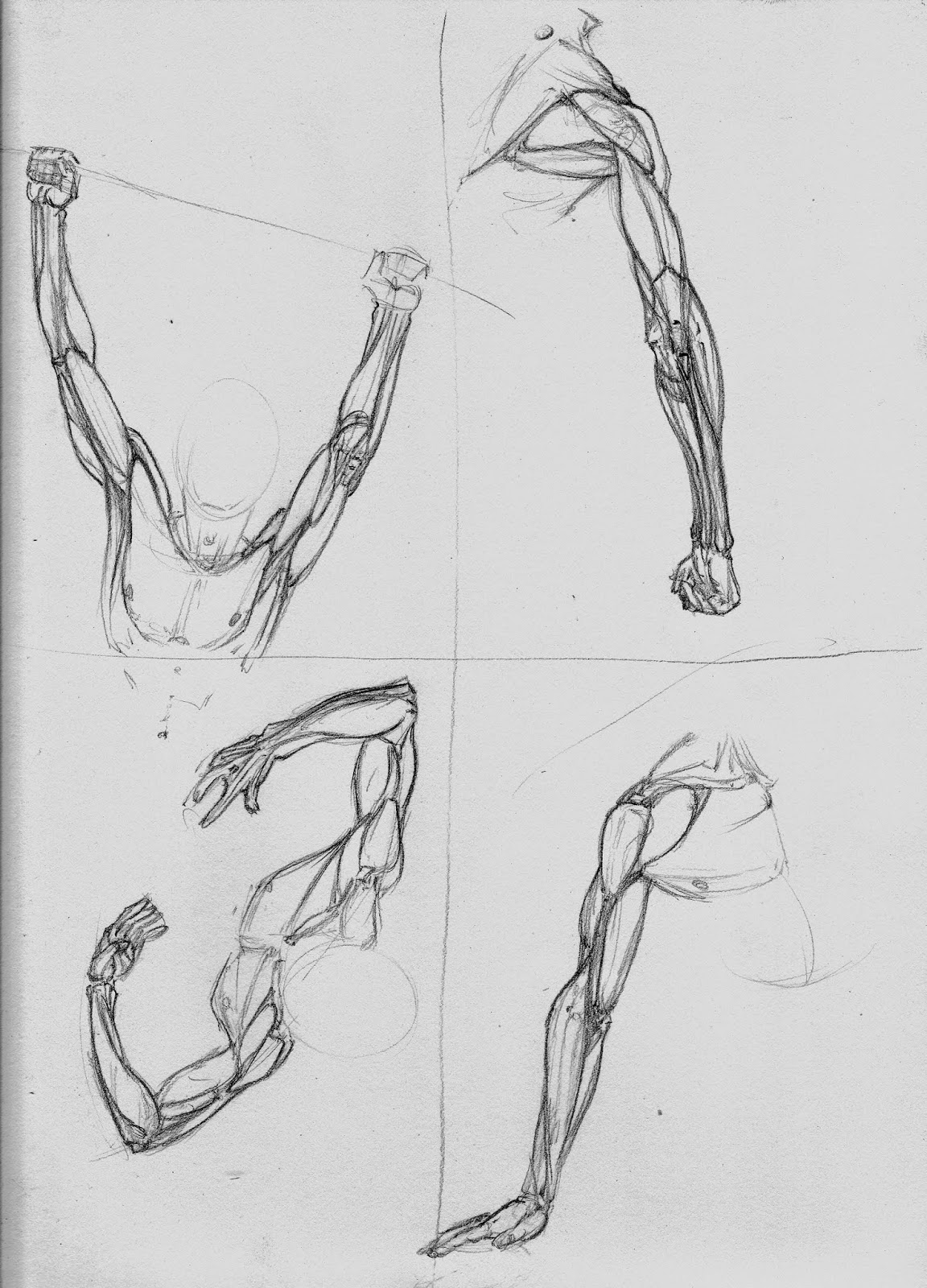To the right is a simple diagram of three pencil points that I know of. I'm sure there are more.
I've attempted the flat head (1) with a Prismacolor Premier graphite pencil, but it’s too thick (~5mm) and too hard for that sort of drawing. A charcoal pencil (2mm) might be a better choice.
The more common shape I’ve
been seeing is a sort of rounded edge (3) used by Vilppu, Proko, and Karl Gnass. The idea is
to round the graphite in such a way that the more you tilt it, the thicker the
line you draw. If you hold it in the normal, calligraphic, over-the-palm way,
you might as well be drawing with (2). So, they recommend artists hold their
pencils under-palm in a manner Karl Gnass demonstrates in this video. A thin
line can be achieve without tilting the pencil on its head by simply turning
the pencil like a paintbrush. Drawing in this way also helps to keep the pencil
sharp, which improves workflow.
The
problem is—and I’m sure I’ve said this before—learning to hold the pencil
under-palm is like learning how to draw all over again. I guess it would be
easier if I’d been working with paintbrushes up until now. I can appreciate the
purpose of this exercise. The point is not to think of the pencil as putting ‘ah line on teh page,’ but as a tool for
making marks, so you ought to get comfortable with holding it in whatever way
makes the mark you want. It’s easy to learn this with brushes, since we were
never taught how to hold them in the first place. So you see people holding brushes like pencils and sometimes holding them like a chopstick and tilting them
in whatever direction to paint in that direction. A good sketch artist has to
learn to do that with a pencil.
But
it’s a pain in the ass, and I might save time in the long run by practicing it now, but that
would make learning the rest of this stuff (anatomy, planes, and shading) more
difficult. So, I’ve decided to put it off until I’m comfortable with the more
encyclopedic details. I’ll reach a point (and I’m almost there) where I’ll look
at my figures and think, ‘The
construction is accurate, but the texture makes this a sloppy representation.’
That’s when I’ll be done learning construction and be able to focus fully on
technique.













.jpg)
.jpg)

.jpg)
.jpg)
.jpg)
.jpg)
.jpg)
.jpg)
.jpg)
.jpg)
.jpg)
.jpg)